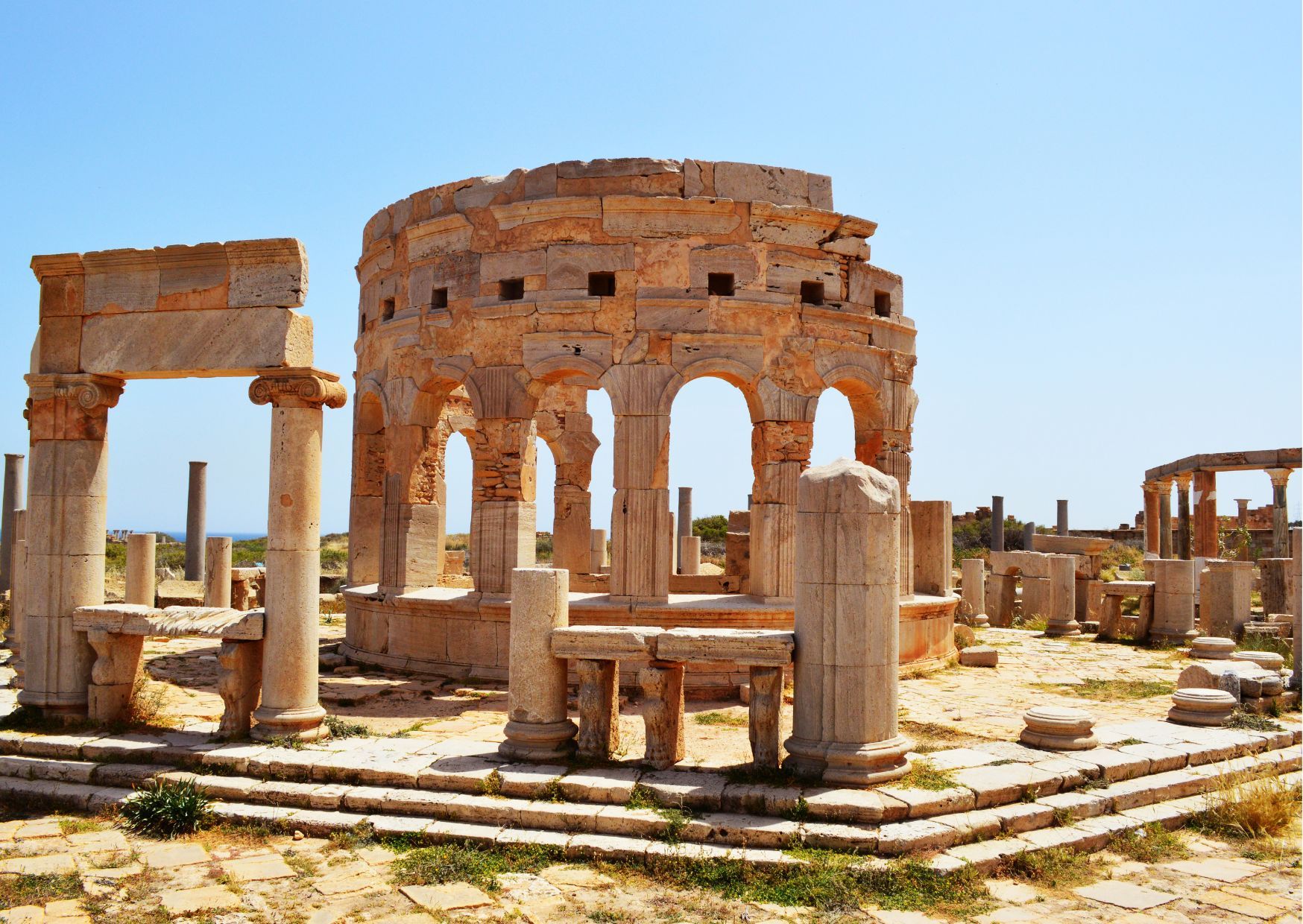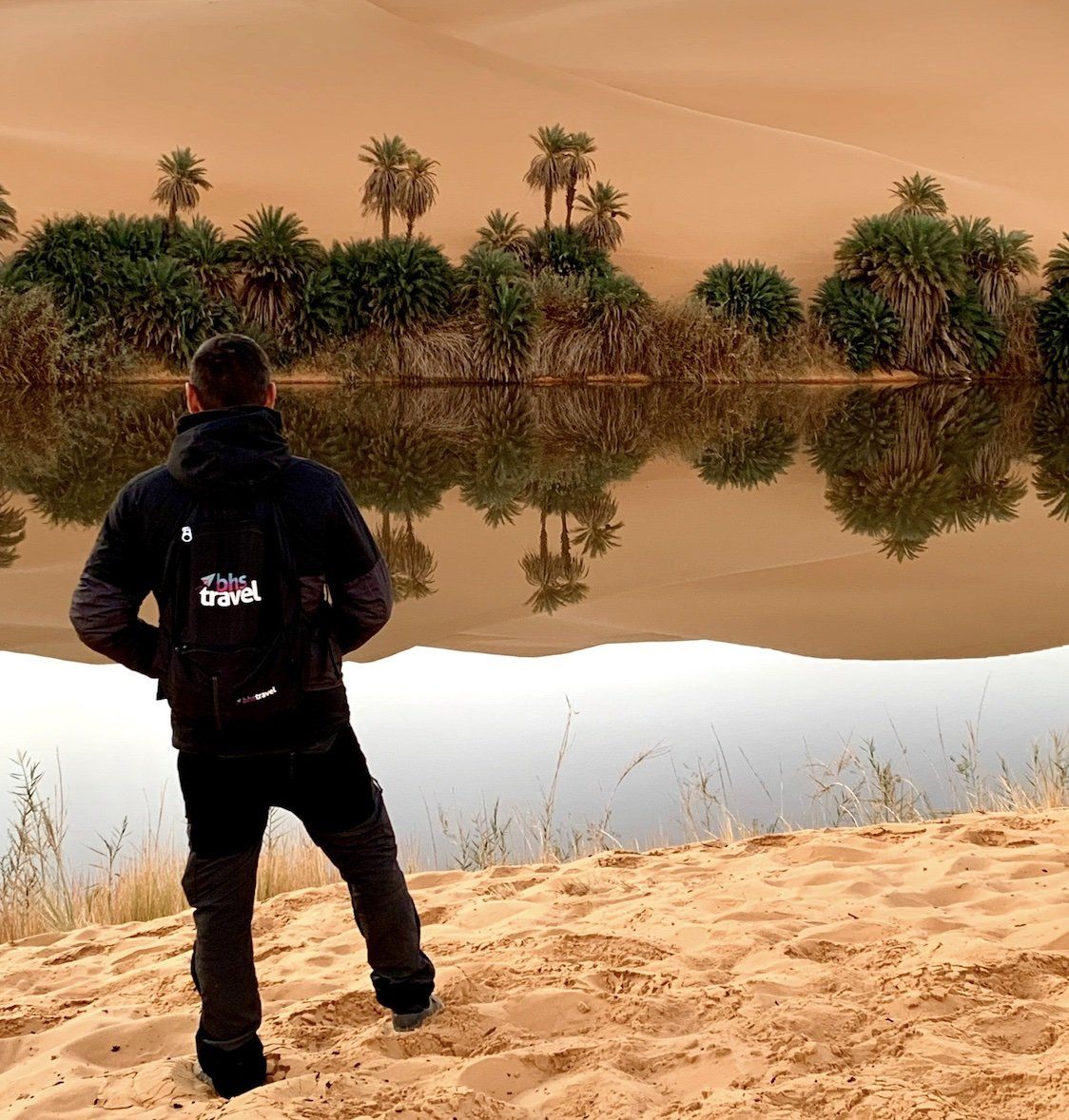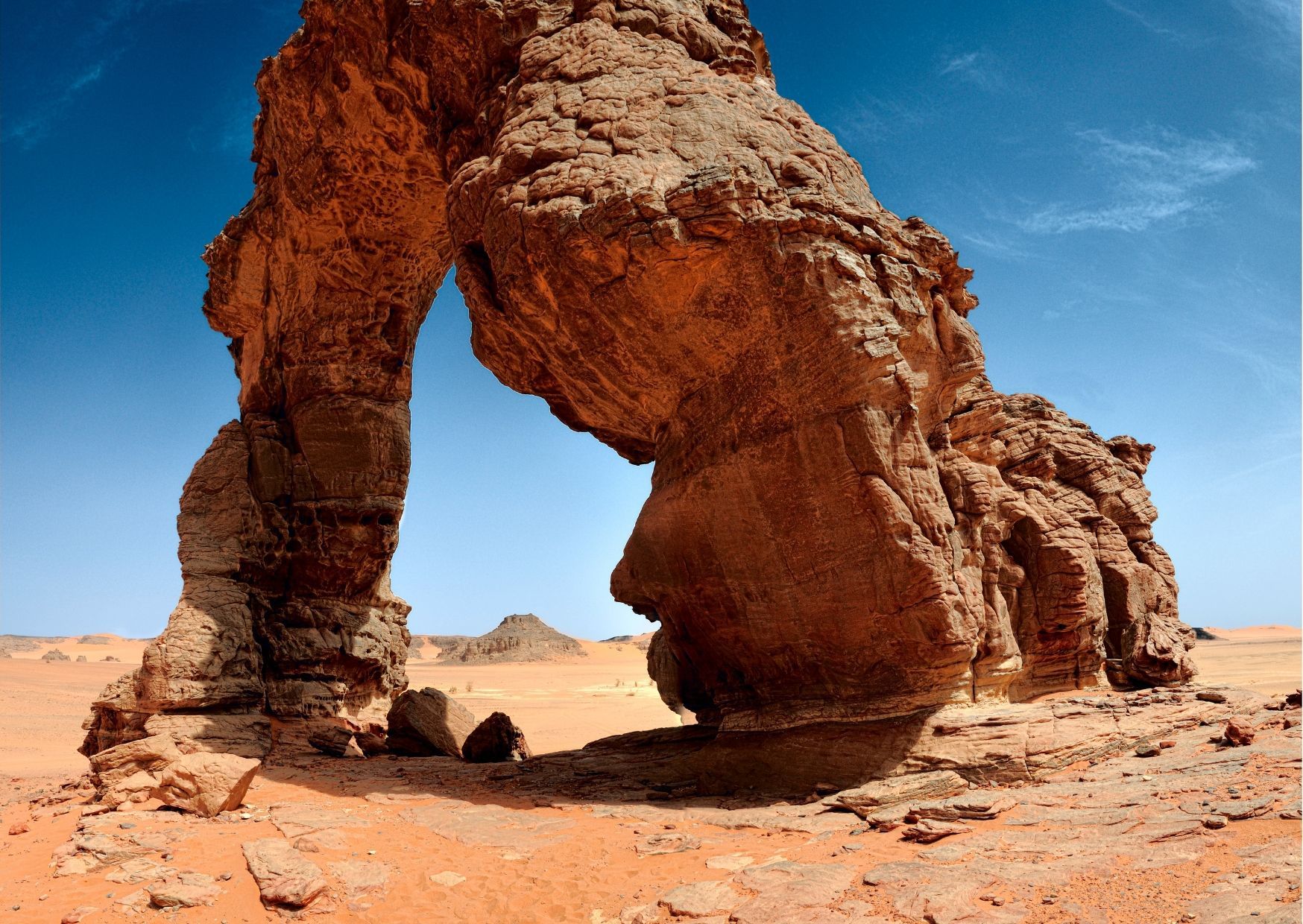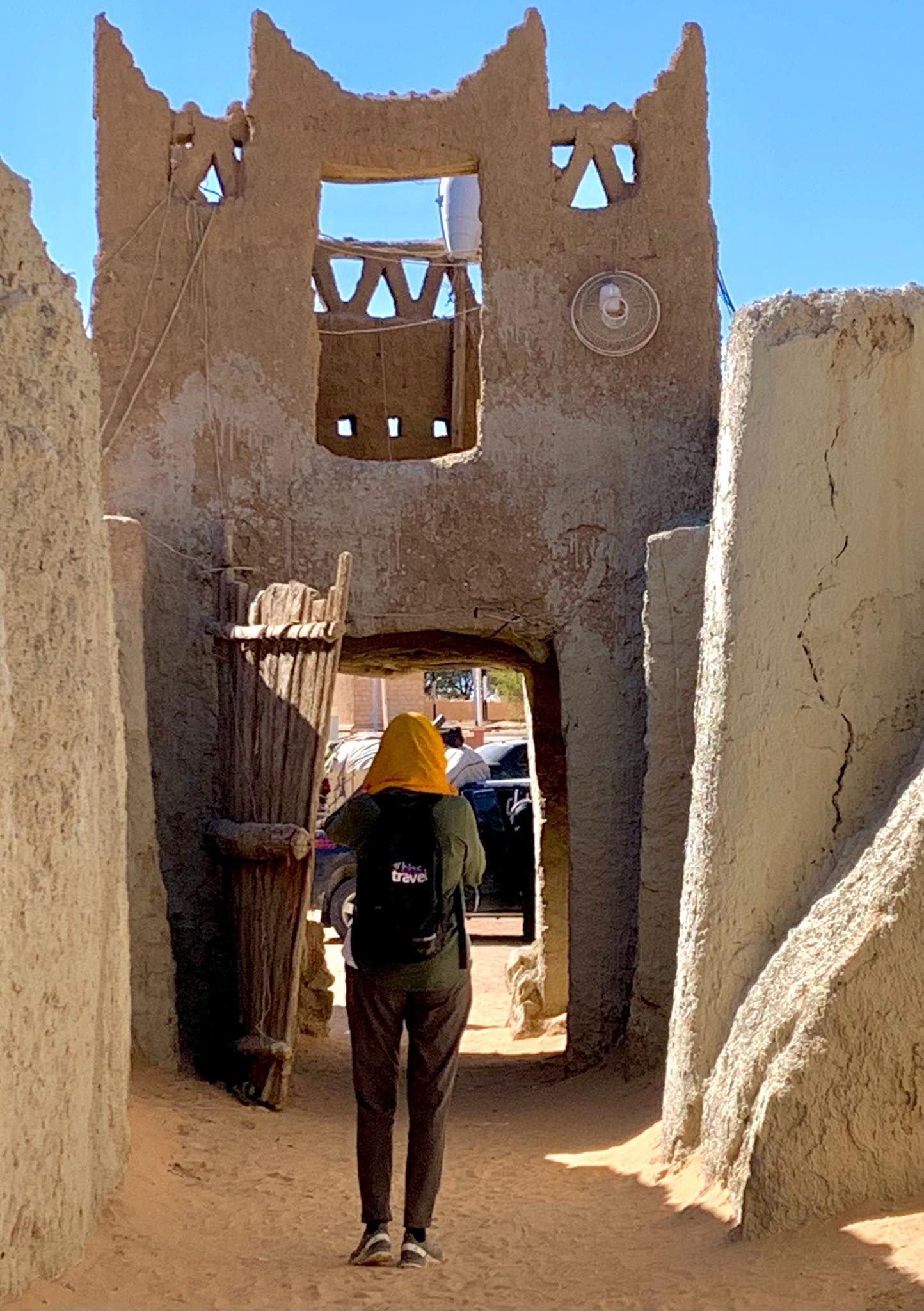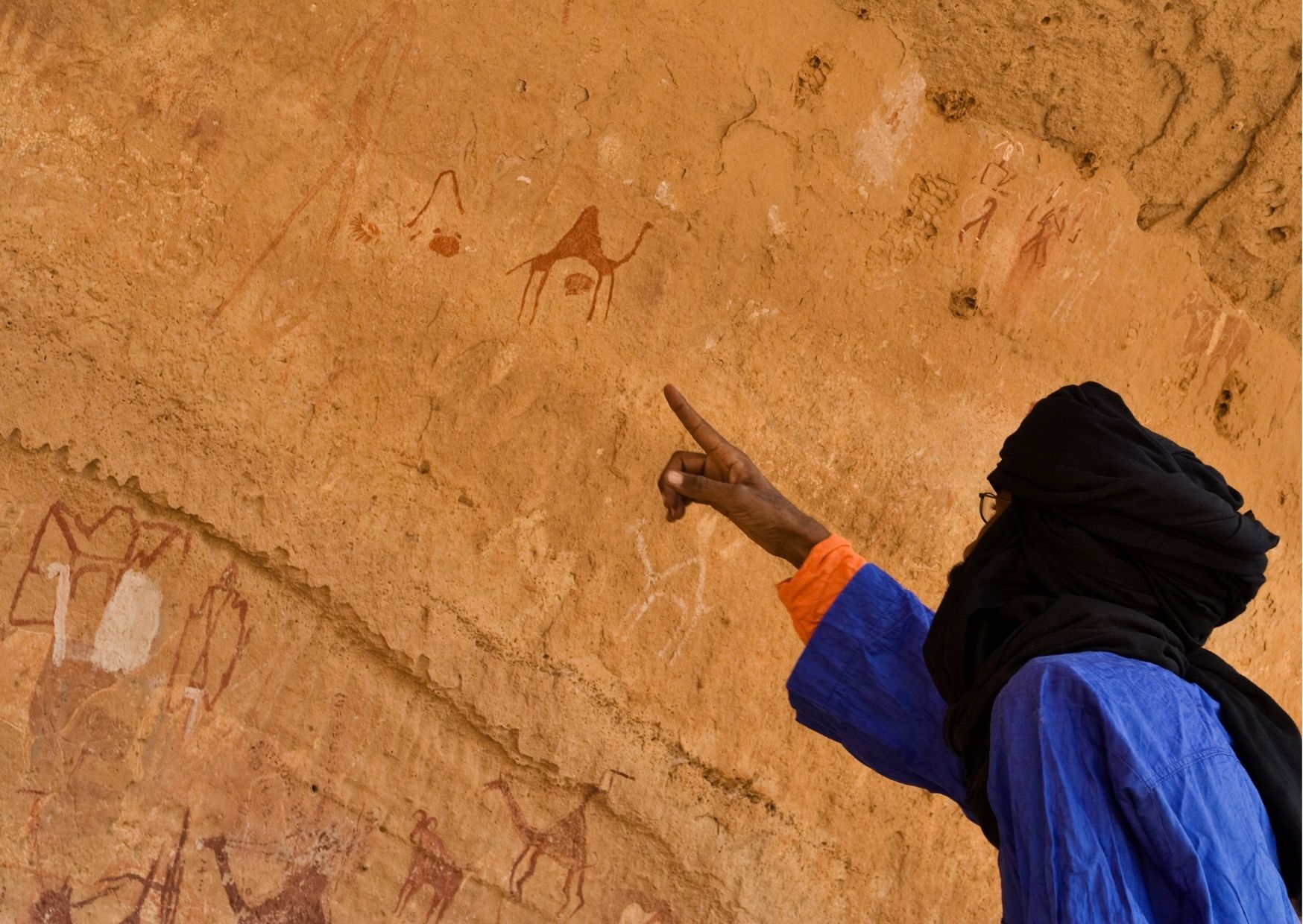LIBYA

The excitement rises sharply: a frontier by land, as in the past, the black, green and red flag that graces the wind: it’s all true, we’re taking you to Libya! The Mediterranean coasts, in the ancient region of Tripolitania, testify to the importance of these lands at the time of the Roman Empire: we will visit the theatre of Sabratha and the complex of Leptis Magna, an ancient jewel almost 2000 years old, hidden from the eyes of travellers for way too long. A 4×4 expedition will take us to another world: from Ghadames to the Acacus, one of the most beautiful deserts in the world, in the driest heart of the Sahara
THE BHS TOUCH
Libya: in its entirety! The Roman complexes of Sabrata and Leptis Magna, the caravan cities of Ghadames and Ghat, and finally the Sahara in 4×4 and tent to discover the wonders of south-west Libya. We will spend six days of pure adventure in the immensity of the Tadrart Acacus, the twin desert of the neighbouring Tassili n’Ajjer in Algeria, where we will discover extraordinary rock formations, high dunes, sandstone arches and deep wadis, embellished by ancient rock paintings dating back more than 10,000 years. Accompanied by an experienced local team, with guides and security team through the wonderful giant of the Sahara!
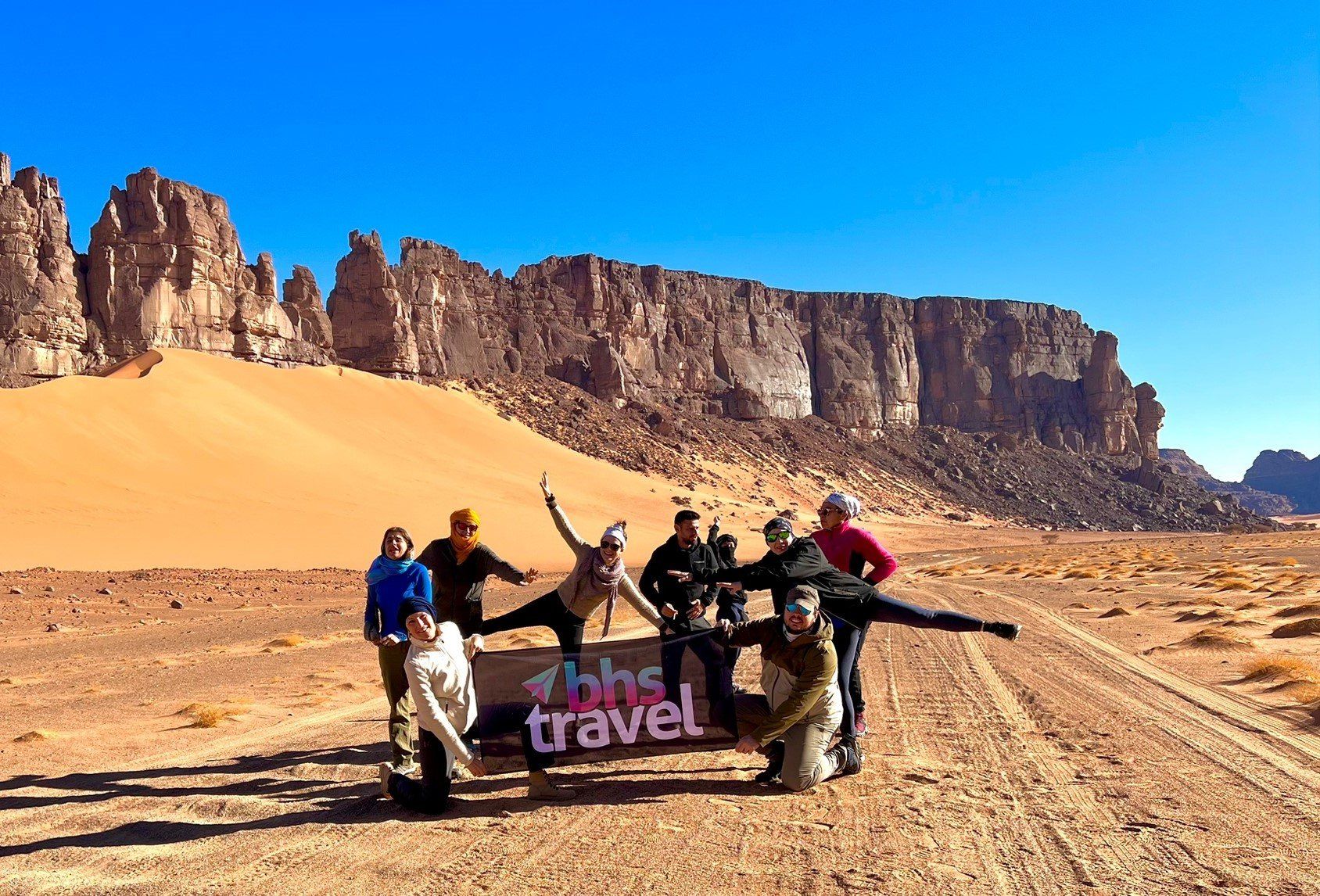
Highlights
![]() 4×4 drive in the Tadrart Acacus Desert
4×4 drive in the Tadrart Acacus Desert
![]() The caravan gem Ghadames
The caravan gem Ghadames
![]() Ghat medina, pearl of the Sahara
Ghat medina, pearl of the Sahara
![]() The Roman treasures of Sabratha and Leptis Magna
The Roman treasures of Sabratha and Leptis Magna
 Where will we sleep
Where will we sleep
3* hotel, guesthouse, bungalow, tent in the desert
 How we will get around
How we will get around
4×4 jeep
LIBYA
Rating
Travel by 4×4 with local drivers in an area unaccustomed to tourism, desert and without infrastructure. It presents no particular physical difficulties, but requires great spirit of adaptation due to the many nights in tents, no possibility of washing with running water, and the distance from any kind of comfort
Per altre informazioni sui nostri viaggi, consulta la sezione FAQ.
ITINERARY
DAY 1: we’ll meet up in Tripoli and spend the night in a hotel in Tripoli
Morning: breakfast and departure for Sabratha. Visit to the ancient Roman city of Sabratha, one of the best preserved in North Africa, and its magnificent theatre, one of the finest examples of 2nd-century Roman architecture. Today, the theatre, as well as the entire ancient city of Sabratha, is on the Unesco World Heritage List.
Afternoon: continuation of the journey towards the interior of Libya and late afternoon arrival in Nalut
Evening: dinner and night in guesthouse
Morning: breakfast and visit to the Ksar of Nalut, a typical fortified Berber village, and continue the journey to the ancient caravan city of Ghadames. Today the real adventure begins in one of the most evocative corners of the Sahara
Afternoon: visit to the beautiful fortified oasis city of Ghadames. The covered city, declared a UNESCO World Heritage Site in 1986, is a maze of alleyways, tunnels, courtyards and places of worship, and its particular architecture served to protect its inhabitants from the heat of the area
Evening: dinner and night in a hotel in Ghadames
DAY 4 – 5: The real adventure begins today, 3 days of exploring one of the most evocative corners of the Sahara Desert, where we will hardly encounter any other human presence and camp in dreamlike scenery, under endless starry skies. We will follow the border line with Algeria, crossing the magnificent red desert of Hamada el Hamra, the Bin Duqish canyon and the sea of sand dunes amidst a multitude of bizarre rock formations. Finally we will discover the surreal Magadet area, an endless series of pinnacles and other rock formations stretching to the horizon line
DAY 6: after three days of desert trails, we emerge from the depths of the Sahara at Ghat. Visit to the city of Ghat, an important historical caravan centre along the Sahara routes, with a picturesque medina dominated by a fort. Overnight in a hotel in Ghat
DAY 7 – 8: the Tadrat Acacus! The best of the immense vastness of the Sahara without any human contamination. A succession of dunes, sandy valleys, ancient lava flows and bizarrely shaped pinnacles, as well as beautiful natural rock bridges. Visit the impressive Forzhaga Arch and the Wadi Tashwinat. This area has been inhabited by nomadic peoples, who found refuge in the wadi’s natural cave mazes, as evidenced by the numerous rock carvings, some of which date back more than 10,000 years. The paintings, inscribed on the UNESCO World Heritage list, can also be found in the Tin Lalan wadi and other wadis flowing into the Tashwinat, a complex system of 101 valleys and gueltas, furrowed by as many streams, now dried up. Tent nights in the Tadrat Acacus
Morning: breakfast and departure for Ubari Lakes. Check-in at the bungalows
Afternoon: visit the beautiful Ubari Lakes. True oases in the desert, they are located in a spectacular setting, in a veritable sea of imposing sand dunes
Evening: dinner and night in bungalows at the Ubari lakes
Morning: breakfast and departure for the long journey back to Tripoli. Short stop in Sebha, historic capital of the Fezzan region
Afternoon: continuation of the journey to the Libyan capital and arrival in the evening
Evening: dinner and evening in Tripoli
Morning: after breakfast, depart along the coastal road built during the Italian occupation and arrive in Leptis Magna. Visit Leptis Magna, perhaps the most important complex of Roman ruins in Africa. Founded by the Phoenicians, flourished under Carthage and then fell into Roman hands, it preserves a marvellous theatre, the forum, an exceptionally well-preserved market, basilicas, monumental arches and colonnades, which testify to the importance of the city, especially during the empire of Septimius Severus (born and raised in Leptis Magna), when it had more than 100,000 inhabitants and was one of the most important cities in the Empire
Afternoon: On the way back to Tripoli, we’ll visit Villa Selene, a splendid example of a Roman villa of the second century. Its floors are enriched with fine mosaics. Return in the afternoon to Tripoli and relax in the hotel
Evening: dinner and evening in Tripoli
DAY 10: check out in the morning and it’s time to go again. We bid farewell to our fellow travelers and hope to see you again on the next trip!

Upcoming departures
Reserve your spot with €100
19-30
2.500,00€ – 2.823,00€Select options
26-06
2.500,00€ – 2.823,00€Select options
15-26
2.500,00€ – 2.823,00€Select options
05-16
2.500,00€ – 2.823,00€Select options
12-23
2.500,00€ – 2.823,00€Select options
20-01
2.500,00€ – 2.823,00€Select options
07-18
2.500,00€ – 2.823,00€Select options
What’s Included
PRICE INCLUDES
- Twin room accommodation with breakfast in Tripoli, Nalut e Ghadames
- Nights in the desert in a tent with full board
- Camping equipment (including tents and sleeping mats)
- All transfers
- Visa and local permits
- BHS tour leader for the duration of the trip
- Local team + security staff
- Medical Insurance (up to 100,000€)
PRICE DOES NOT INCLUDE
- Personal expenses and anything not specifically mentioned
Important notes
VISA
Required, BHS will take up the request with the appropriate authorities
START & END POINT LOCATION & TIME
The trip starts in Tripoli on Day 1 at our joining point hotel, and finishes back in Tripoli on Day 12 at our joining hotel
SINGLE SUPPLEMENT
A Single Supplement can be booked if you’d prefer not to share a room on this trip, subject to availability
